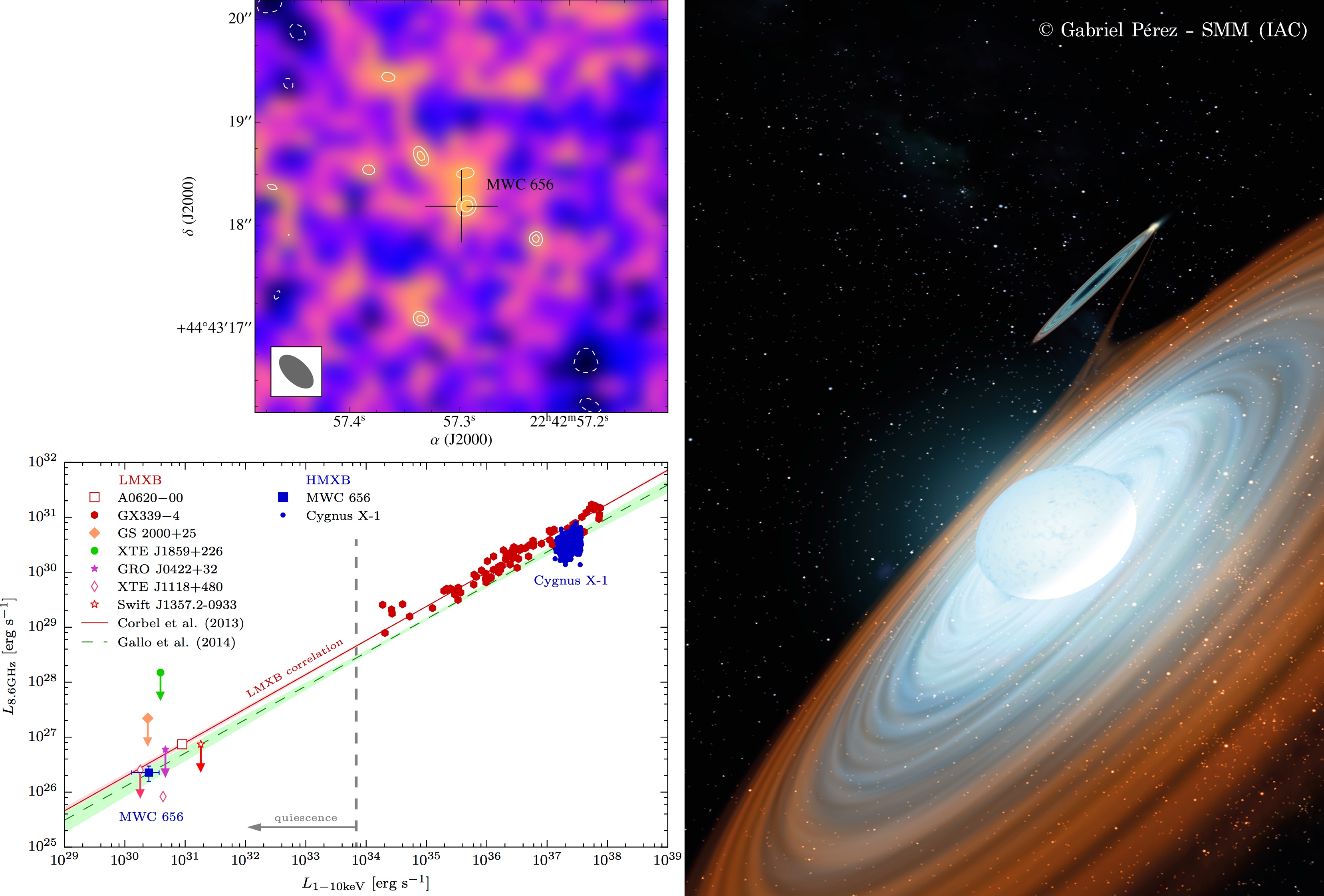Daily Image
07-03-2017Simultaneous radio/X-ray detection of the first Be/BH binary MWC 656
| Submitter: | Benito Marcote |
| Description: | MWC 656 is the first known binary system composed of a Be star and a black hole (BH). Be/BH binaries are important in the context of binary system evolution and sources of detectable gravitational waves because they are possible precursors of coalescing neutron star/BH binaries. MWC 656 was discovered as a transient gamma-ray source and X-ray emission was later revealed, indicating its nature as a new high-mass X-ray binary. Although radio observations at different epochs and with different interferometers have been conducted during the last years, most of them have only provided upper-limits on its putative radio emission. MWC 656 was only detected in a single epoch with the VLA up to now, suggesting a variable behavior also at radio frequencies. Optical observations provided an estimation of the orbital period of 60.37 days and the mass of the black hole of 3.8-6.9 solar masses. We conducted simultaneous X-ray and radio observations with Chandra and the VLA, reporting a faint X-ray and radio emission. These data allowed us to detect one of the faintest quiescent luminosities observed in stellar-mass black holes so far. Additionally, we find that the obtained luminosities are fully compatible with those expected from the X-ray/radio correlation derived from quiescent BH/low-mass X-ray binaries. Given that only one Galactic BH/high-mass X-ray binary was known to date, Cygnus X-1 (always located in the high end of the correlation), the addition of MWC 656 (located in the low end) allow us to study this X-ray/radio correlation for the first time in high-mass X-ray binaries. These results show that the accretion/ejection coupling in stellar-mass black holes is independent of the nature of the donor star. The figure above shows a representation of MWC 656 (right), the radio map together with the optical position (top left), and the X-ray/radio correlation including low-mass and high-mass X-ray binaries and the position of MWC 656 on the diagram. These results have just been published in Ribó et al. (2017, ApJL, 835, 33). |
| Copyright: | Marc Ribo (UB) & Benito Marcote (JIVE) |
| Tweet |  |
